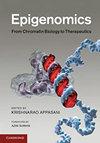健康与退休研究》中表观遗传时钟的世代及其与社会经济地位的联系。
IF 3
4区 医学
Q2 GENETICS & HEREDITY
引用次数: 0
摘要
目的:本文简要介绍了与人类衰老相关的九个表观遗传时钟与社会经济和行为特征以及健康结果之间的联系。材料与方法:我们从健康与退休研究(Health and Retirement Study)这一数据源中估算了常用时钟和新时钟。结果:虽然所有这些时钟都被认为能反映 "衰老",但它们使用不同的 CpG 位点,而且相互之间的关系并不紧密。第一代和第四代时钟与社会经济状况或健康结果的联系不如第二代和第三代时钟。结论表观遗传时钟是令人兴奋的新工具,它们的不断发展很可能会提高我们对暴露在皮肤下如何加速衰老的认识。本文章由计算机程序翻译,如有差异,请以英文原文为准。
Generations of epigenetic clocks and their links to socioeconomic status in the Health and Retirement Study.
Aim: This is a brief description of links between nine epigenetic clocks related to human aging and socioeconomic and behavioral characteristics as well as health outcomes.Materials & methods: We estimate frequently used and novel clocks from one data source, the Health and Retirement Study.Results: While all of these clocks are thought to reflect "aging," they use different CpG sites and do not strongly relate to each other. First and fourth generation clocks are not as linked to socioeconomic status or health outcomes as second and third generation clocks.Conclusion: Epigenetic clocks reflect exciting new tools and their continued evolution is likely to improve our understanding of how exposures get under the skin to accelerate aging.
求助全文
通过发布文献求助,成功后即可免费获取论文全文。
去求助
来源期刊

Epigenomics
GENETICS & HEREDITY-
CiteScore
5.80
自引率
2.60%
发文量
95
审稿时长
>12 weeks
期刊介绍:
Epigenomics provides the forum to address the rapidly progressing research developments in this ever-expanding field; to report on the major challenges ahead and critical advances that are propelling the science forward. The journal delivers this information in concise, at-a-glance article formats – invaluable to a time constrained community.
Substantial developments in our current knowledge and understanding of genomics and epigenetics are constantly being made, yet this field is still in its infancy. Epigenomics provides a critical overview of the latest and most significant advances as they unfold and explores their potential application in the clinical setting.
 求助内容:
求助内容: 应助结果提醒方式:
应助结果提醒方式:


